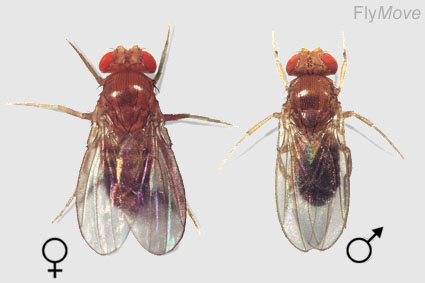The Gal4-UAS system was devised by Andrea Brand and Norbert Perrimon some years ago, and it remains one of the more powerful contributions to the modern Drosophila genetic toolbox.
The system relies on a combination of two engineered P elements. P elements are a naturally occuring transposable element in the Drosophila genome: a complete 2.9kb element encodes a transposase enzyme that catalyses the element's excision and reintergration at novel sites. P elements were the first germline tranformation system developed for Drosophila. An engineered P element contains a marker gene that confers an easily recognised phenotype on flies bearing the element. Nowadays. the most common marker gene is white, which is required for the eyes of the fly to take up the red and brown pigments that give Drosophila its brick red eyes (white is so-named because mutants have white eyes due to an inability to take up pigments).
The first element of the Gal4-UAS system carries to transgene to be expressed, downstream of several copies of the yeast Gal4 Upstream Activating Sequence (UAS). Essentially, the UAS is a sequence to which the yeast Gal4 transcription factor binds, thereby driving transcription of the downstream sequences (in this case, the transgene of interest). In the absence of Gal4, the transgene contained within this element is transcriptionally inactive. We can refer to this element as the responder element.


